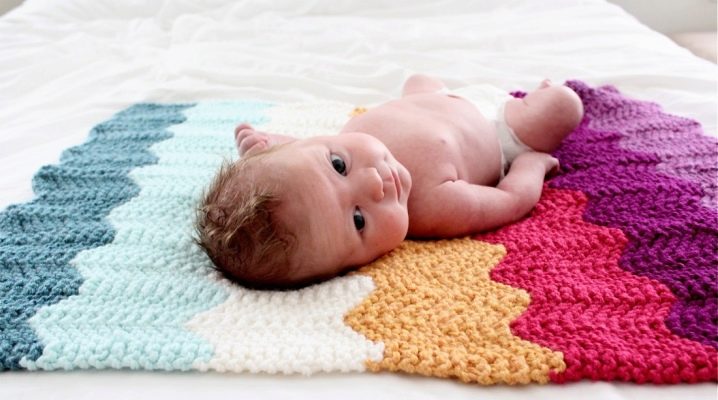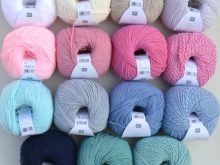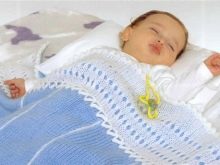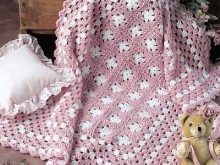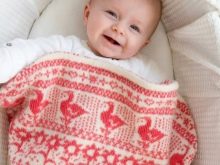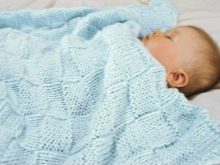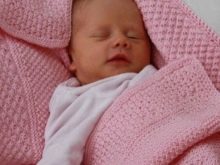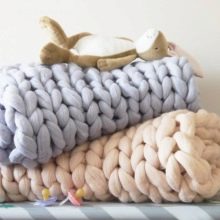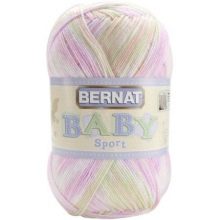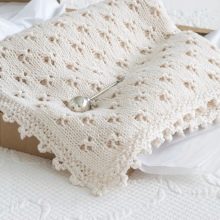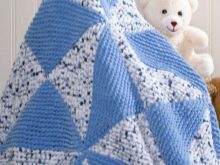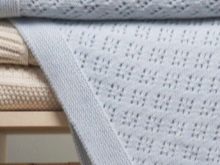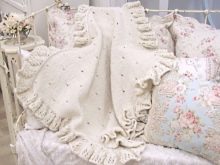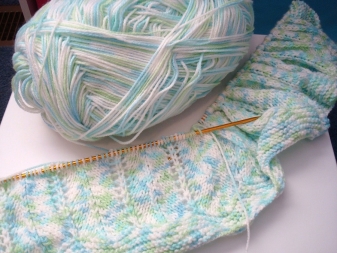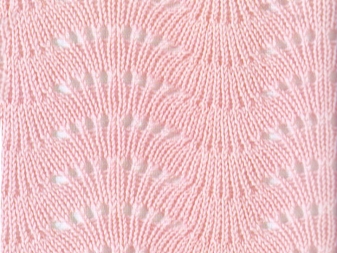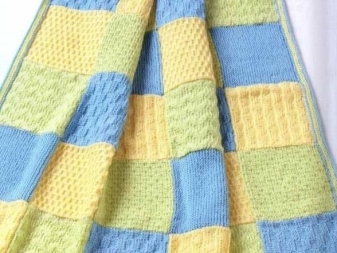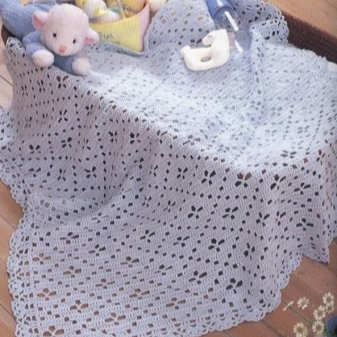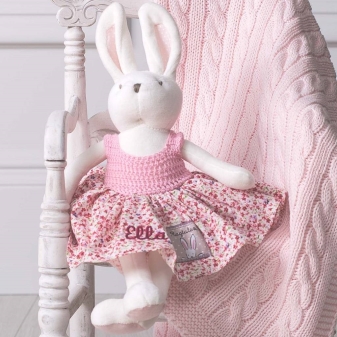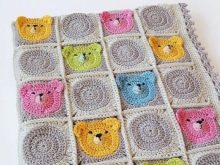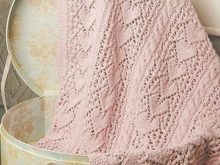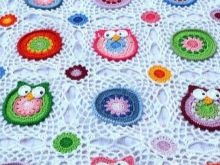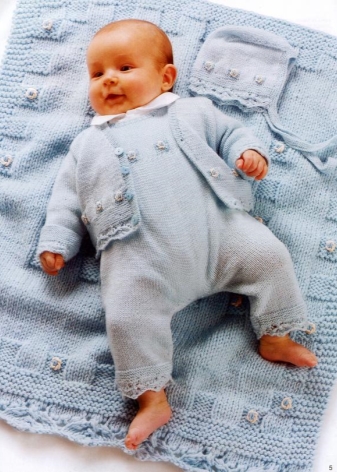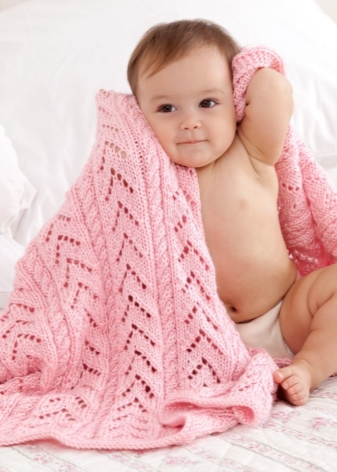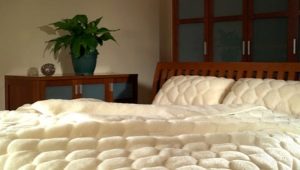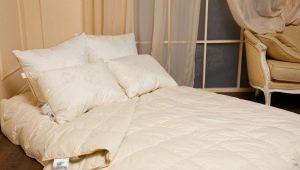Knitted blankets for newborns
The birth of a child is an important and very joyful event in the life of parents. Blanket for the newborn is a necessary thing for the baby. Today in the shops you can find a large number of knitted blankets for newborns, but a blanket tied with your own hands will save and give the baby all the love and awe of his mother.
Even those people who are just starting to try knitting themselves will cope with this task. Of course, you will need perseverance, as well as the desire to make everything perfect - in this case, the results will not disappoint you.
Special features
Most of the time only born babies spend in the crib. Blankets and blankets for newborns should provide not only comfort, but also the safety of the baby, its sound and healthy sleep. Planning to start knitting, it is worth exploring the features of these products:
- The skin of a newborn baby is sensitive and only gets used to the outside world.To avoid not only discomfort, but also injury, one should prefer soft materials.
- Baby bedding should be cleaned and washed more often than usual. The blanket should keep its qualities for a long time.
- Hygroscopicity. The blanket must pass the necessary moisture and air, while maintaining the required amount of heat. This is especially important for active children who at night may be wrapped in a blanket with their heads.
- There is no need to waste time and effort on making a large blanket. The product will be constantly "lost", partially revealing the baby.
A small blanket is suitable for walking - a practical option that does not take up much space in the stroller.
Material selection
Not all yarn, in the title of which the word “baby” is present, corresponds to the standards. It should be understood that products for newborns must be of very high quality. When choosing a material, one should proceed from the composition of the yarn and the properties of its yarns:
- A suitable option for a warm blanket is wool. She will warm the baby and serve as long as possible. The softest and most wearable material is cashmere. If the blanket is a gift, it is worth knowing what material it is made of.Merino wool is well suited for children's products.
- Less expensive will be children's acrylic. This yarn incorporates synthetics, but (unlike wool) does not lead to allergic reactions in babies.
- As a summer option, flax or cotton, silk, bamboo. This yarn is natural and more likely not to cause irritation on the velvety skin of the baby. The blanket of these materials is easy to wash in the car, and you can not worry about the fact that with frequent washing it will stretch and lose its quality.
- An interesting choice will be mixed yarn. These are cotton and acrylic, silk-wool, silk and cotton and other options. Yarns containing silk fibers allow things to maintain quality over time.
- The color of the yarn depends on personal preferences, the fantasy of the craftswoman herself. However, experts noted that a baby blanket in pastel colors has a sleep-adjusting effect. Bright products with an abundance of pictures cause activity and are well suited for baby games.
How to make with the help of knitting needles and hooks?
Plaid for a newborn baby, size - 80 × 100 cm. It will take the following:
- Hook number 3.5.
- Yarn from 300 to 550, given the knitting, density and quality of the material used.
This option is the easiest to perform and even for beginners. First you need to make a sample, a sample is suitable - a square measuring 14 × 14 cm. It is necessary to determine how many loops will be 1 cm in height and width. As a result, so many eyelets should be assembled to make a row 100 cm long.
In the first row, a double crochet starts up in the 4th loop (from the hook), after which with a double crochet, in each subsequent loop of the chain of the row one single column is drawn - to the very end.
The subsequent ones are performed as follows: at the very beginning they make 3 loops to raise the row, then, following the example of the first row, double crochet columns. The edge already without the use of a nakida is tied with columns, which are then displayed from left to right. The result is a fairly neat edges, while tightly holding the shape.
It is possible to use the decor for a different taste: a combination of multi-colored stripes, the alternation of rows of various widths, “chess” (multi-colored squares).
Blanket size 90 × 90 cm. For work, prepare:
- Spokes number 3.
- Schemes of any openwork patterns.
- Yarn from 300 to 500 g (approximately 6 skeins).
196 loops are knitted with needles, knitting goes on the front side (starting from the 12th row, knit according to the harvested pattern). Two lines are arranged horizontally, followed by two lines vertically, from the edges they are knitted with a front satin line of 10 loops.
Vertically, 30 holes in a line are knitted from the outer edges, then - along new horizontal ones (arranged strictly symmetrically). Completes all the facial smooth of 14 rows. The loops are dropped, and the edges of the blanket are tied with a column.
Plaid "of stars", size - 70 × 80 cm. In the process, you will need the following:
- Spokes number 3.
- Yarn, 250-300 g.
- Patterns with asterisks.
According to the pattern scheme, it is necessary to knit 20 hexagons (for one, the spokes are scored 6 loops and are knitted in the following order - edge, then front loop, nakid and again edge). So you need to do 32 rows. Next, from the edges of gaining 20 loops (on the needles of 40). The series continues to knit in the wrong.
The next master class will teach you how to knit a star-like baby blanket.
Wool blanket, size - 55 × 75 cm. For work will be required:
- Hook number 5.
- 250 g of yarn (mohair, acrylic and wool).
- Spokes number 6.
- Schemes of patterns with descriptions.
Knitting is performed in three patterns, they are arranged in any order (6 squares in length and 5 in width).Squares knit needles according to the scheme, then the needles dial 60 loops. Platform viscous make the first and final two loops - before and after edge.
In the middle, you must link the squares of 28 rows. Having connected 24 rows, arrange the figures as follows: 2, 3, 1 (patterns are shifted in each line). In the end, everything closes garter stitch. Using a hook, the edges give strength and neat appearance.
Blanket for babies, size - 55 × 70 cm (knitting diagonally). In the process of work will require the following:
- Yarn, 300-350 g.
- Spokes number 4.
- Hook number 3.
This method is one of the easiest. The needles dial 4 P., everything goes with LH. It is necessary to add from each edge until there is 160 P. on the knitting needles (using a nakid). Reaching the right amount, knit 3 loops before and after the nakida, knit up to 4 loops. At the end, crochet around the circle. At the passage from the nakid, at your own discretion, you can thread the ribbon and tie it with a bow.
Patterns Ideas
Blanket for kids, made by hand - a practical and beautiful thing. Openwork options are most often found on blankets for children. They amaze with the number and variety of performance techniques.Very beautiful openwork will look with offset loops, as well as braids. Wavy or zigzag patterns will give baby blanket tenderness and lightness.
Pictures related to children's themes (whether they are characters from cartoons, fairy tales, or just cute animals) can be obtained through a combination of purl and facial loops.
On the Internet you can find many such schemes. Such a blanket will be liked by an older child.
For a newborn it would be more appropriate to prepare a blanket with a small toy, stitching it to the very edge of the product. So the child will not only keep warm, but also be amused. Options may be very different. The main thing - to show imagination.
